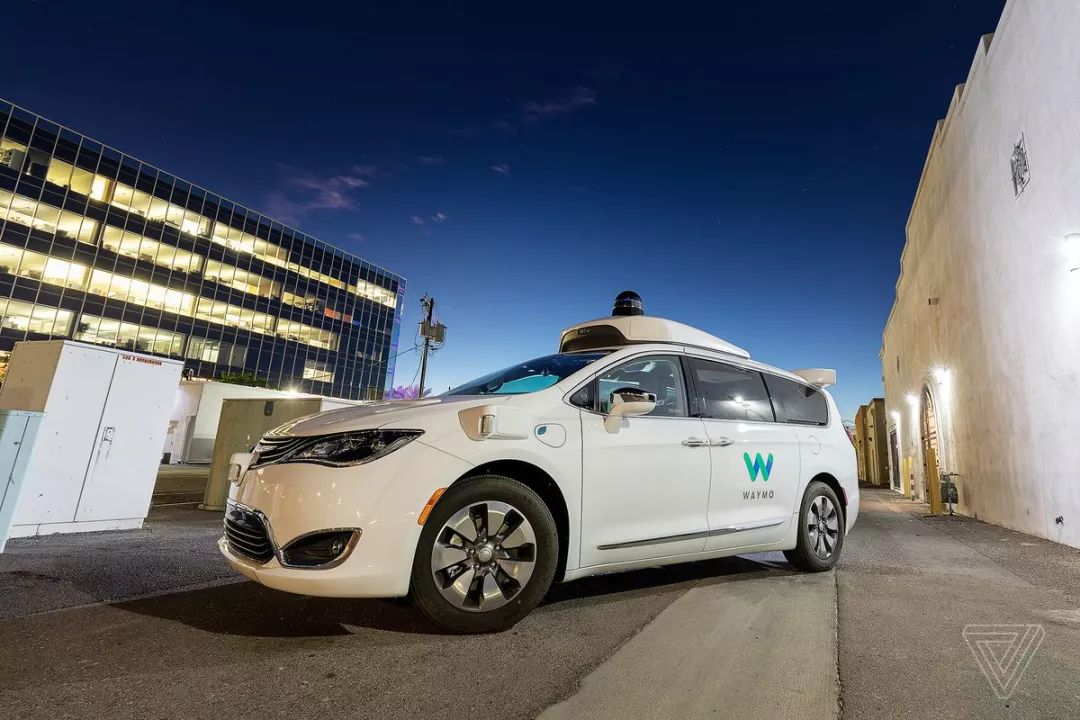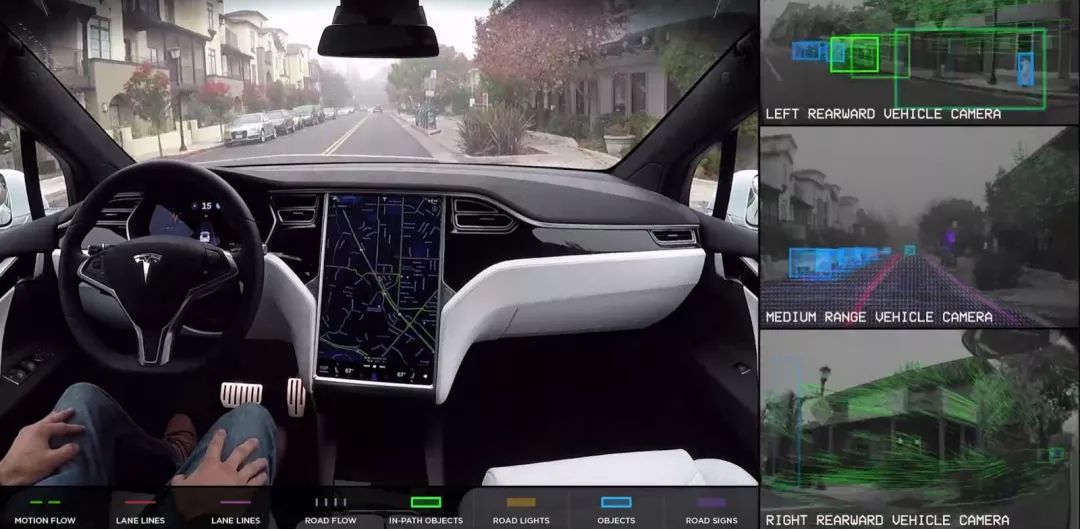Waymo One: The First Commercialized Self-driving Car Service in the Industry
Today, Waymo – after nearly a decade of devoted research – has finally taken the self-driving car to the forefront of commercialized operation with its new taxi service, Waymo One. This rollout has completely taken over the technology section of foreign media in recent days.
What about automakers, you ask? In response to outsiders like Apple and Google, who have coveted the trillion-dollar car industry, Didier Leroy, Executive Vice President of Toyota, has said: “Do you think we will open the door and say ‘please come in’? No, we will not let them in.”
So, where is Toyota’s self-driving taxi service? No, don’t get me wrong, I’m not targeting Toyota. I’m referring to all the major car companies that use “the most precise sensor layout coupled with the operation of collecting data from their own fleet” to develop autonomous driving technology. None of them can surpass Waymo’s technology level.
Hasn’t there been any automaker that has come out to redeem the industry’s reputation? Yes, there is. Tesla has surpassed a fleet size of 500,000 vehicles equipped with Autopilot hardware, logging over one billion miles with Autopilot enabled. However, Autopilot’s current performance isn’t quite up to par with true autonomous driving, serving as a major variable with potential.
Waymo’s Challenges
The Verge recently published a long article detailing the test ride experience of Waymo One, which is quite comprehensive. In sum, Waymo has taken every aspect of the user experience into account, from app delivery, service area, driving experience, human-car interaction, and even pricing.
One small detail is that at the end of last year, Waymo removed the safety driver positioned in the driver’s seat to deal with emergency situations. In the official commercial launch today, these safety drivers have returned to the driver’s seat because “passengers still feel nervous when there isn’t anyone behind the steering wheel.”
Waymo One is the first truly commercialized self-driving taxi service in the industry. Does this mean that the competition in the self-driving race of the last three years has ended? Will Waymo’s self-driving cars quickly dominate the world like Google search?
To make self-driving cars global, Waymo still has several major challenges to overcome.
Waymo’s current self-driving cars are not yet truly autonomous.
In the annual report released last year by the California Department of Motor Vehicles (DMV), Waymo’s self-driving cars require human intervention about once every 5,596 miles (9,000 kilometers). The term “human intervention” refers to the system not being able to handle extremely complex or uncontrollable road conditions, requiring a safety driver to take over.Less than 10,000 kilometers per intervention is not enough to remove the safety driver on the road. This is the efficiency of Waymo’s technical improvement based on its annual reports submitted to the California DMV in the past three years. Although Waymo’s fleet is getting larger and the rate of accumulated road test mileage is increasing, the efficiency of technical improvement continues to decrease year by year. In 2015, Waymo had to intervene once every 1,300 miles, in 2016 this rate improved dramatically to once every 5,128 miles, an improvement of 394%, however, in 2017, it only improved by less than 10% to once every 5,596 miles.
From this efficiency improvement perspective, Waymo still has a long way to go before it can truly cover all scenarios with its automatic driving cars.
The second issue is the overall scalability issue of the entire technology camp led by Waymo, that Waymo’s autonomous driving fleet has poor scalability.
Waymo’s autonomous driving vehicles follow a technology route of sensor fusion for Laser Radar, millimeter-wave Radar, cameras and ultrasound probes, filtering the environmental information collected by the above sensors, and combining it with high-precision maps for planning and decision-making. In fact, high-precision maps can be understood as a redundant layer of perceptual technology for autonomous driving.
This brings up a problem that whenever Waymo enters a new city, it needs to first map out high-precision maps of the city’s roads before the autonomous driving fleet can enter, and then run testing before it can actually be put on the road.
Ignoring the high cost of high-precision map production, the cumbersome testing process has resulted in poor scalability for the autonomous driving fleet. Even if they test it in Beijing for two years and are familiar with every scenario, they would be back to square one when they enter Shanghai.
The reason for this is that open urban roads are the most complex scenarios, and autonomous driving cars should first achieve commercialization in semi-open and simple scenarios such as factory areas and parks. However, if an autonomous driving fleet roots itself in a city for two years instead of running across a province or even the whole country, the scenarios that it actually runs are in another sense limited areas, an upgrading version of a factory area or park with increased difficulty.Using Waymo’s recent commercialization as an example, Waymo One’s autonomous driving fleet is currently limited to the Tempe, Mesa, Gilbert and Chandler suburbs in Arizona. This means that although Waymo leads the industry in technology, its commercialization efforts in restricted areas are not fundamentally different from those of domestic autonomous driving companies that operate in factory parks and parks.
This technological approach means that even if Waymo begins commercialization in Phoenix, poor scalability means that it is impossible for them to expand their autonomous driving fleet across the entire United States overnight. Commercial exploration of autonomous driving fleets by Waymo and other companies in the Waymo technology camp is destined to be a long progressive development process.
This is why on November 14th, Bloomberg published an article titled, “Waymo CEO Says Self-Driving Cars Won’t Be Ubiquitous for Decades.” In the article, Waymo CEO John Krafcik stated that autonomous driving technology is truly difficult. He believes that autonomous driving cars will require driver assistance for many years to come, and does not believe that the technology will one day operate under all-weather conditions without interacting with the driver.
In summary, Waymo, the world’s most advanced autonomous driving company, has begun commercialization, but it will still take a very long time before passengers can lie down in their cars and commute to work.
Tesla’s Dilemma
As mentioned at the beginning of the article, Tesla Autopilot is becoming increasingly difficult to ignore. Tesla’s fleet of 500,000 vehicles is collecting real-world road test data from across the globe, and the Autopilot-enabled road test mileage has now exceeded one billion miles. To put this number in perspective, Waymo’s recent road test mileage has only just surpassed 10 million miles.### The fatal flaw of Autopilot: Over reliance on camera perception
According to Elon Musk, Autopilot will operate in shadow mode during the 9 billion miles when Autopilot is turned off, while still collecting road test data and learning human driving behavior models. However, relying solely on camera perception for automatic driving is considered a gamble by many executives of autonomous driving companies, who believe that Tesla will eventually switch to the lidar camp.
Tesla has achieved a milestone of a total of 10 billion miles in its entire fleet, with only 10% of those miles being driven by Autopilot. The reason Tesla has not equipped its vehicles with costly components such as lidar or cm-grade high-precision maps is because Autopilot-defined sensors are intended to be sold to Tesla owners worldwide who have thousands of vehicles. This means that any expensive components and technology are not suitable for Autopilot.
Tesla is likely waiting for an opportunity to follow when the cost of components such as lidar and high-precision maps becomes more affordable, then it can achieve commercial success. However, even if the price of lidar drops significantly, Autopilot will not adopt it unless its camera perception route has reached a dead end.
As Elon Musk pointed out, the road system is targeted for passive optics. In order to drive (automatic vehicles) in any given/changing environment, we must solve the optical image recognition problem exceptionally well. If we solve this problem, what is the point of active optics device (lidar)? It cannot read road signs. In my opinion, it is like a crutch that will trap companies in a very difficult situation.
If you persist in an extremely complex neural network technology route and solve the image recognition problem very well, then I think you have maximized the solution to the problem. Then you need to merge it with the increasingly complex radar information. If you choose an active proton generator with a wavelength in the range of 400 nanometers to 700 nanometers, it is actually foolish because you have already achieved this passively.> You will eventually try to actively emit protons at a radar frequency of about 4 millimeters, because (this frequency) can penetrate barriers, allowing you to “see” the road ahead through snow, rain, dust, fog, and anything else. It’s puzzling that some companies use the wrong wavelength for active proton generation systems. They have armed cars with a lot of expensive equipment, making them expensive, ugly, and unnecessary. I think they will eventually find themselves at a disadvantage in competition.
In Elon Musk’s view, this is a difference in the underlying sensor perception information. The perception information that integrates lidar with cameras and millimeter wave radar will complicate the problem. Therefore, insisting on a camera-centric perception route is the only correct and low-cost solution.
The final result is one front-facing millimeter wave radar, eight cameras, and twelve ultrasonic sensors, which are all the sensors of the latest Tesla Autopilot 2.5.
Now it seems that Autopilot is basically following the technical route mentioned by Elon above. In an interview with Recode, Elon said that the biggest technical challenge at present is to improve the deep neural network, and eight cameras must eventually be able to recognize all road traffic objects.
When all eight cameras are enabled, Autopilot runs eight different neural networks of varying degrees of complexity, then fuses the perception information of the eight networks and does path planning.
The so-called “adhere to the extremely complex neural network technology route, achieve very advanced image recognition technology”, to “maximize the solution to the problem”.
However, the core problem is that it is almost impossible for current computer vision + artificial intelligence technology + AI chips to achieve the ability to understand environmental road conditions like the human eyes and brain.
Will Waymo overturn the automotive industry with autonomous driving technology? At present, this day seems far away. Can Tesla successfully represent the automotive industry’s counterattack? It seems to have unlimited potential but also has huge bugs. The victory or defeat in the autonomous driving race will not be known for at least five years.
* Autopilot 9.0 update: Tesla Takes Its First Step Towards L4 Autonomy

This article is a translation by ChatGPT of a Chinese report from 42HOW. If you have any questions about it, please email bd@42how.com.


